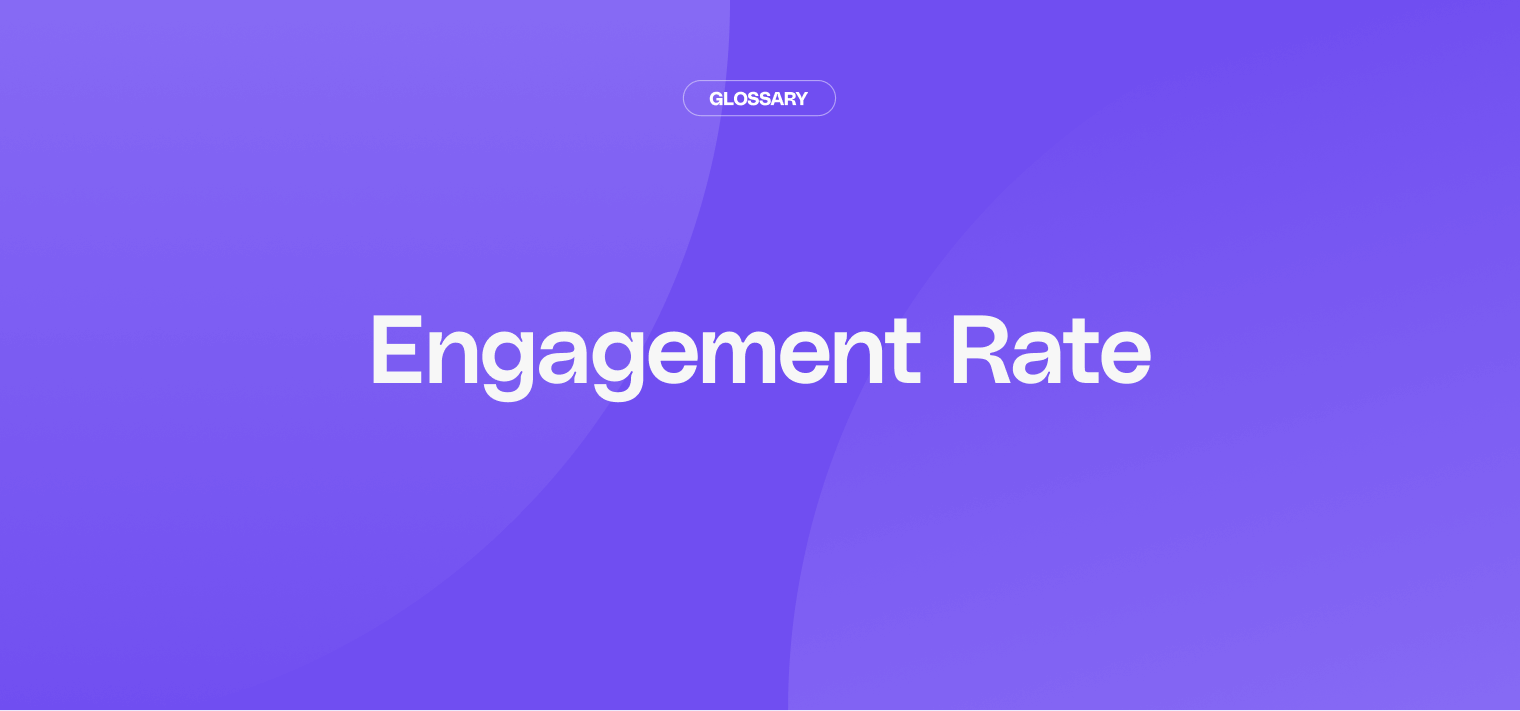The Engagement Rate is a critical metric in the field of Growth Marketing. It is a measure of the level of interaction that a piece of content, a product, or a service receives from its intended audience.
This interaction can take many forms, such as likes, shares, comments, clicks, and more. The Engagement Rate is usually expressed as a percentage, representing the proportion of the audience that has interacted with the content or product in some way.
Understanding and optimizing the Engagement Rate is a crucial aspect of Growth Marketing. A high value indicates that the content or product resonates with the audience, which can lead to increased brand awareness, customer loyalty, and, ultimately, business growth. Conversely, a low value may signal that the content or product is not meeting the audience's needs or expectations, indicating a need for improvement or change.
| Key Element | Description |
|---|---|
| Understanding Engagement Rate | Measure of interaction with content, products, or services, often expressed as a percentage. |
| Components | Engagements, Impressions, Reach. |
| Importance in Growth Marketing | Critical metric indicating audience resonance; high rate leads to increased brand awareness and loyalty. |
| Improvement Strategies | Creating high-quality content, optimizing for platforms, using calls to action. |
| Measurement and Analysis | Using analytics tools and data analysis techniques to track performance and make data-driven decisions. |
Key components
The Engagement Rate is calculated by dividing the number of engagements by the total number of impressions or reach, and then multiplying by 100 to get a percentage.
The components can vary depending on the platform or medium being used, but they generally include the following elements.
Engagements
Users take these actions in response to a piece of content or a product. They can include likes, shares, comments, clicks, views, and more. The specific types of engagements that are counted can vary depending on the platform or medium.
Impressions
Impressions refer to the number of times a piece of content or a product is displayed, regardless of whether it was clicked or not. This can include views of a webpage, displays of an advertisement, or appearances in a social media feed. The more impressions a piece of content or product has, the greater its potential reach.
However, impressions alone do not provide a complete picture of engagement. A piece of content or product could have many impressions but a low Engagement Rate if few people are interacting with it. This is why it's important to consider both impressions and engagements when calculating this metric.

Reach
Reach refers to the number of unique individuals who have seen a piece of content or a product. Unlike impressions, which count every display of the content or product, reach only counts each individual once, regardless of how many times they have seen the content or product.
Reach provides a measure of the size of the audience that a piece of content or product has reached. However, like impressions, reach alone does not provide a complete picture of engagement. A piece of content or product could have a high reach but a low Engagement Rate if few people are interacting with it. This is why it's important to consider both reach and engagements when calculating this value.

Importance in growth marketing
The Engagement Rate is a critical metric in Growth Marketing because it measures how effectively a piece of content or a product is resonating with its intended audience. A high Engagement Rate indicates that the content or product is meeting the audience's needs and expectations, which can lead to increased brand awareness, customer loyalty, and ultimately, business growth.
Conversely, a low rate may signal that the content or product is not meeting the audience's needs or expectations, indicating a need for improvement or change. By monitoring and optimizing this metric, marketers can ensure that their content and products effectively engage their audience and drive growth.
Brand awareness
A high Engagement Rate can increase brand awareness by exposing the brand to a larger audience. When users engage with a piece of content or a product, they are more likely to share it with others, increasing its reach and visibility. This can lead to increased recognition and awareness of the brand, which can in turn drive growth.
Furthermore, engagement can also increase brand recall, which is the ability of consumers to recognize and remember a brand. When users engage with a piece of content or a product, they are more likely to remember the associated brand. This can increase the likelihood that they will think of the brand when making a purchase decision, increasing its market share and driving growth.
Customer loyalty
A high rate can also increase customer loyalty by creating a positive user experience. When users engage with a piece of content or a product, they interact with the brand meaningfully. This can create a sense of connection and loyalty to the brand, increasing the likelihood that they will continue to engage with it.
Furthermore, engagement can also increase customer satisfaction, which is the degree to which a product or service meets the customer's expectations.
When users engage with a piece of content or a product, they indicate that it meets their needs and expectations. This can increase their satisfaction with the brand, increasing the likelihood that they will continue to engage with the brand in the future, driving growth.

Improvement strategies
There are several strategies that marketers can use to improve the Engagement Rate. These strategies focus on creating content and products that resonate with the audience, encouraging them to engage. By implementing these strategies, marketers can increase the Engagement Rate, driving growth.
It's important to note that the effectiveness of these strategies can vary depending on the audience and the platform or medium being used. Therefore, it's important to test and optimize these strategies to ensure they effectively increase the Engagement Rate.
Creating high-quality content
Creating high-quality content is one of the most effective strategies for improving the Engagement Rate. This means creating relevant, valuable, and engaging content to the audience. High-quality content can attract and retain the audience's attention, encouraging them to engage.
To create high-quality content, it's important to understand the audience's needs and interests. This can be done through market research, customer feedback, and data analysis. By understanding the audience, marketers can create content that resonates with them, increasing the Engagement Rate.
Optimizing content for the platform
Another effective strategy for improving the Engagement Rate is optimizing the content for the platform or medium used. This means creating content that is designed to perform well on a specific platform or medium. For example, video content may perform well on social media, while long-form content may perform well on blogs or websites.
It's important to understand the platform's algorithms and user behavior to optimize content for the platform. This can be done through platform-specific research and testing. By understanding the platform, marketers can create optimized content, increasing the Engagement Rate.
Using calls to action
Using calls to action is another effective strategy for improving the Engagement Rate. Calls to action are prompts that encourage users to take a specific action, such as liking, sharing, commenting, or clicking. Marketers can encourage users to engage with the content or product by using calls to action, increasing the Engagement Rate.
It's important to use calls to action strategically, as overuse can lead to user fatigue and decreased engagement. Therefore, it's important to test and optimize the use of calls to action to ensure they effectively increase the Engagement Rate.

Measurement and analysis
Measuring and analyzing the Engagement Rate is a critical part of Growth Marketing. By measuring this metric, marketers can track the performance of their content and products, identify areas for improvement, and make data-driven decisions to drive growth.
There are several tools and techniques that marketers can use to measure and analyze the Engagement Rate. These tools and techniques can provide valuable insights into the audience's behavior, the performance of the content or product, and the effectiveness of the marketing strategies.
Calculation
We calculate the Engagement Rate by dividing the number of engagements by the total number of impressions or reach, and then multiplying by 100 to get a percentage.

Analytics tools
Analytics tools are software applications that collect, analyze, and report data. They can be used to measure the Engagement Rate, track the performance of the content or product, and provide insights into the audience's behavior. Some popular analytics tools include Google Analytics, Facebook Insights, and Twitter Analytics.
These tools can provide a wealth of information about the Engagement Rate, including the number of engagements, the types of engagements, the reach, the impressions, and more. By analyzing this data, marketers can better understand the Engagement Rate and its impact on growth.
Data analysis techniques
Data analysis techniques are methods used to process and interpret data. They can be used to analyze the data collected by the analytics tools, identify patterns and trends, and make data-driven decisions. Some popular data analysis techniques include descriptive, trend, and predictive analyses.
These techniques can provide valuable insights into the Engagement Rate and its impact on growth. For example, trend analysis can reveal changes in the Engagement Rate over time, indicating the effectiveness of the marketing strategies. Predictive analysis can forecast future changes in the Engagement Rate, providing valuable information for planning and decision-making.
Conclusion
The Engagement Rate is a critical metric in Growth Marketing. It provides a measure of how effectively a piece of content or a product is resonating with its intended audience. A high Engagement Rate can lead to increased brand awareness, customer loyalty, and ultimately, business growth.
By understanding the components of the Engagement Rate, the importance of the Engagement Rate in Growth Marketing, the strategies to improve the Engagement Rate, and the tools and techniques to measure and analyze the Engagement Rate, marketers can effectively engage their audience and drive growth.
Unlock your growth potential with Cello
Ready to transform your users into powerful growth drivers for your SaaS product? With Cello, you can effortlessly integrate a peer-to-peer referral program and watch your engagement rates soar. Experience the simplicity of adding viral growth capabilities to your product in just about 4 hours of development time. Benefit from a seamless integration process, flexible rewards, and real-time performance tracking—all with a success-based pricing model that ensures you pay only when you see results. Join the ranks of companies like tl;dv and witness a significant uptick in your conversion rates. Don't miss out on the opportunity to make user-led growth your competitive advantage. Book a demo today to see Cello in action and start capitalizing on the power of engagement.
Resources
Related Articles

Best Referral Software for SaaS with Chargebee Integration: The Definitive Guide to Revenue Attribution
The Strategic Convergence of Billing and User-Led Growth In the contemporary landscape of B2B ...

Automating Stripe Referral Tracking: A Cello Integration Guide
Scaling a referral program manually is impossible. The integration between Cello and Stripe ...

